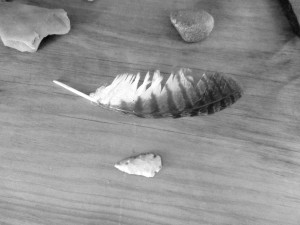It’s Only Natural—December 2015
Hunting and History on Canaan Mountain
By Hans M. Carlson
It’s the opening of deer season and a beautiful late fall day. The leaves are off the trees and the sun is casting long shadows out into the woods. Early this morning about a dozen hunters made their way into Great Mountain Forest, and though I’m at my desk today, they are on my mind. They are out there because they love being in the woods and because they like getting food off the land, but they will be carrying out an important part of our management and monitoring of the forest over the next three weeks as well.
Great Mountain Forest (GMF) was established, in 1909, as a game preserve and a model for wildlife restoration and management. That was the original idea here–that land unsuitable for agriculture could be reforested and still feed people. Waterfowl and white-tailed deer were reintroduced in the first decade, having been extirpated by unregulated hunting and habitat degradation during the charcoaling era. As late as the 1970’s, wild turkeys were successfully reintroduced. The former effort was private, carried out by S.W. Childs and Frederic Walcott; the latter was part of statewide work, in cooperation with the Connecticut Department of Environmental Protection.
Forest management has come a long way from that earlier model at GMF, and forest health, water quality, and timber management are now the primary focus. Yet hunting still plays an important role because as the deer population rebounded, and because humans replaced many of the top predators in northeastern ecosystems, a regulated deer hunt became a necessary part of larger forest management. Without this, deer would exceed habitat limits as they have in many places around the state, to the detriment of larger ecosystems.
In this aspect of forest management GMF hunters are not only keeping the population down, but also acting as designated monitors. Every day they carry a “data-card” and record all the wildlife they see, including deer. Good hunters move slowly through the forest, and they take the time to notice all the activity around them. This is what makes them successful, as well as ideal monitors for understanding populations.
For me, however, our hunters are more than just data collectors. They are part of a larger history of this forest, one which ties knowing and studying with finding food, and with human communities. It’s this working relationship with the land that I’m thinking about this morning.
I’m an occasional hunter, but I’ve spent a good deal of time in their company, both here in New England and in the Canadian north. On my desk in front of me is a memento of the last time I was out with my Cree friend Willie Gunner, three years ago at a place called Lake Temiskamie. Willie is the President of the Cree Trappers Association, responsible for the organization that oversees hunting over a large part of Northern Quebec.
In traditional Cree culture Willie is also a kaanoowapmaakin (pronounced gah-new-whap-mah-gan), a steward responsible for a territory 6 to 8 times bigger than GMF. As with us here, it is his responsibility to see that his piece of the larger forest is left as good as or better than he found it. So he, too, spends lots of time monitoring animals and collecting information about what’s happening on the land. He does this for forest health, and so people can eat.
Of course there are many significant differences between Cree hunting culture and hunting culture here in New England, but there are important similarities in that working relationship to the land. Good hunters tend to not only be very observant, but also very knowledgeable about animals and the larger habitats in which they live. This comes of the necessities of that working relationship, no different really from the knowledge needed to be a good farmer, or even to be a good ecologist. They also tend to care a great deal about the land–at least the good ones do. Often these days hunters are called sportsmen, but hunting to me is very much a way of knowing and working the land.
On my desk, too, is a quartzite arrowhead that Jody Bronson found years back in a streambed not too far from the offices here on Canaan Mountain. This is an artifact from another cultural world, but it is also a connection back to a history of land use here on the mountain, one that stretches back thousands of years.
Photo by Hans M. Carlson.

